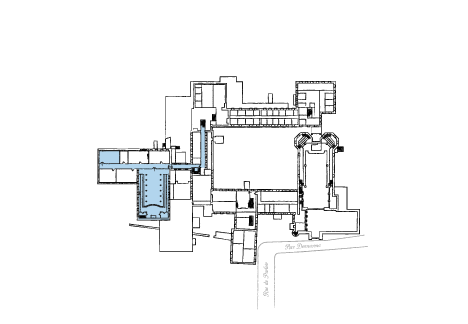0:00 - 0:15
We are in one of the hallways of the school. We arrived here from the St. Augustin staircase. Let's go to the school's reception hall. Let’s go through the large open door that we see on the left.
0:15 - 0:24
Let's move towards the stage.
0:24 - 0:36
Formerly, during the Ursuline school year, parents and sometimes distinguished guests took place in this large hall to attend various events, most often involving the students. Look, there's even a small organ.
0:36 - 1:14
Let's make a full tour of the hall, starting from the right.
1:14 - 1:24
From the front of the stage, we turn to the left and take a last look at this hall which has always been used by the students.
1:24 - 1:31
Let's go towards the exit.
1:31 - 1:34
We’ll take the corridor towards the left.
1:34 - 1:36
And enter the classroom on our right.
1:36 - 1:49
This is a 19th-century classroom. The Ursuline school is now very modern. But some areas of our monastery have retained the old-fashioned decor.
1:49 - 1:53
Let's move on to the showcase of natural sciences.
1:53 - 2:14
This showcase takes up the whole back of the classroom. Let’s start our viewing from the left. In the 19th and 20th centuries, the reputation of the school was attributable to the wide variety of natural subjects taught.
2:14 - 2:17
We turn to look at the teacher’s desk.
2:17 - 2:24
Let’ observe the classroom with all the students’ desks.
2:24 - 2:26
We go back a few steps.
2:26 - 2:34
After the British conquest, several subjects such as science, writing and music were added to the curriculum. Everything was taught bilingually.
2:34 - 2:36
Let us now leave the classroom.
2:36 - 2:44
We’ll take the corridor towards the left.







